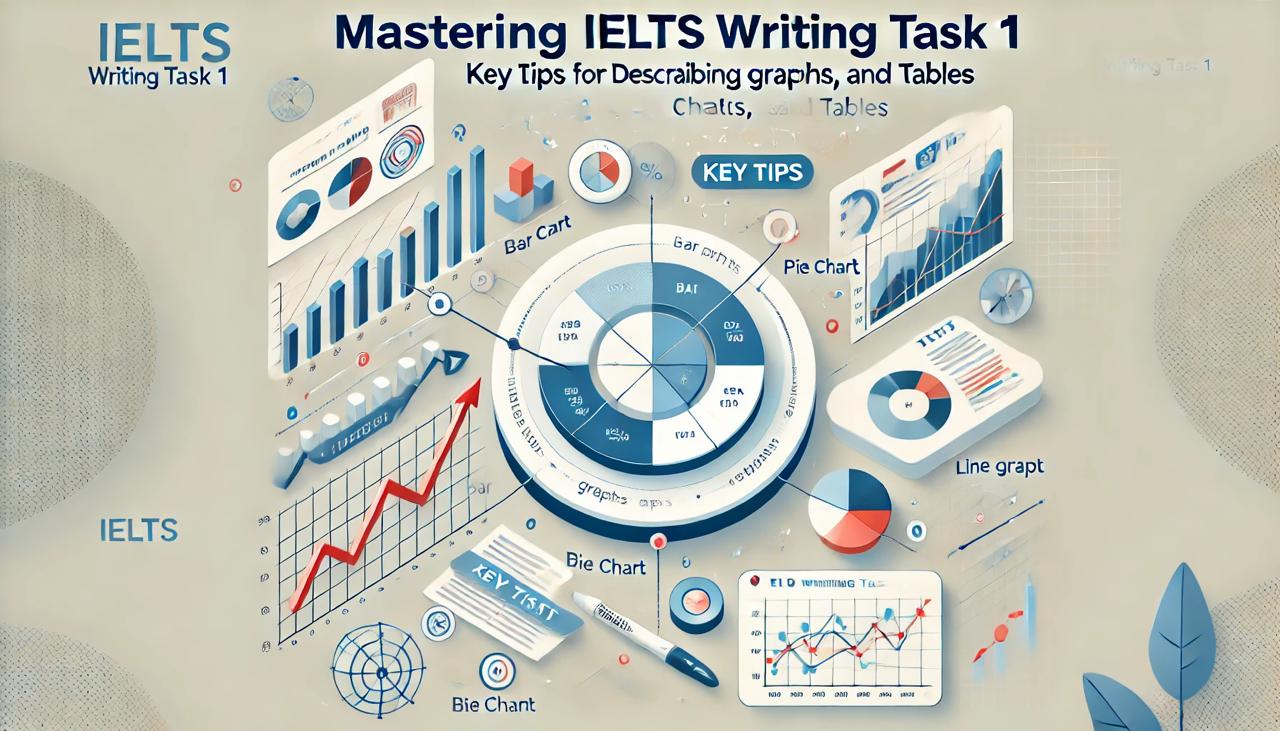Mastering IELTS Writing Task 1: Key Tips for Describing Graphs, Charts, and Tables

Ever wondered why some test-takers achieve Band 7 in IELTS Writing Task 1 while others fall short? What if understanding a few simple strategies could bridge the gap?
Many candidates struggle with IELTS Writing Task 1 because they don’t fully understand the examiner’s expectations. They either describe every detail or fail to highlight key trends, which negatively impacts their score in Task Achievement and Coherence.
In this article, we’ll share actionable IELTS Writing tips and strategies to help you master Task 1. By the end, you’ll have the tools to write clear, structured, and high-scoring answers, just like those found in IELTS Writing Task 1 sample answers.
Key Takeaways
- Learn how to analyze data and identify key trends effectively.
- Discover the importance of using the right vocabulary and grammar to score Band 7 or higher.
- Understand how to structure your response to meet the IELTS Writing Task 1 criteria.
Table of Contents
What is IELTS Writing Task 1 for Academic IELTS?
IELTS Writing Task 1 requires candidates to describe data presented in graphs, charts, or tables. However, many fail to score Band 7+ due to common mistakes, including:
- Focusing on unnecessary details instead of key trends.
- Using repetitive language or inaccurate vocabulary.
- Writing disorganized responses that lack a clear overview.
How These Tips Will Benefit You
- Write responses that fulfill the examiner’s expectations for Task Achievement, Coherence, and Grammar Range.
- Save time during the exam by following a structured approach.
- Improve your overall band score by building confidence in handling data-based questions.
Steps to Ace Writing Task 1
Step 1: Understand the Task Requirements
According to the official IELTS Writing guide on IELTS.org, Writing Task 1 tests your ability to summarize, describe, and compare visual data. Focus on these key elements:
- Highlighting trends, changes, and comparisons.
- Including an overview that summarizes the main points.
Step 2: Identify Key Trends and Data
Examiners value clarity and focus. For instance, when describing a line graph, mention significant changes like peaks, declines, or steady trends. Avoid irrelevant details.
Step 3: Follow a Clear Structure
- Introduction: Paraphrase the task question.
- Overview: Provide a summary of the main trends.
- Body Paragraphs: Detail the significant features with appropriate comparisons.
Step 4: Use Precise Language
For Band 7, you must demonstrate a range of vocabulary and grammatical accuracy. Use phrases like:
- The number of… rose dramatically.
- There was a gradual decline in…
- By contrast, X remained stable.
Step 5: Practice with Sample Answers
Review IELTS Writing Task 1 sample answers to understand what a Band 7+ response looks like. Analyze their structure, vocabulary, and data presentation.
Pro Tips
- Review the Band Descriptors: Familiarize yourself with the IELTS Writing Task 1 band 7 criteria on IELTS.org.
- Use Linking Words Effectively: Ensure logical flow by using connectors like similarly, however, and in contrast.
- Practice Under Timed Conditions: Simulate exam conditions to improve your speed and focus.
FAQs
Q: How to improve IELTS Writing Task 1 if I’m stuck at Band 6?
A: Focus on creating a strong overview, using varied vocabulary, and avoiding repetitive sentence structures.
Q: Are all data points important in Task 1?
A: No, you only need to highlight key trends and comparisons. Including unnecessary details can harm your score.
Q: Where can I find high-quality practice materials?
A: The IELTS.org sample questions page offers reliable materials.
Conclusion
Mastering IELTS Writing Task 1 tips is the key to achieving Band 7 or higher. By focusing on clarity, structure, and precise language, you can confidently approach any graph, chart, or table. Use the official resources on IELTS.org and practice regularly with IELTS Writing Task 1 sample answers to refine your skills. With determination and the right strategies, your target score is within reach!